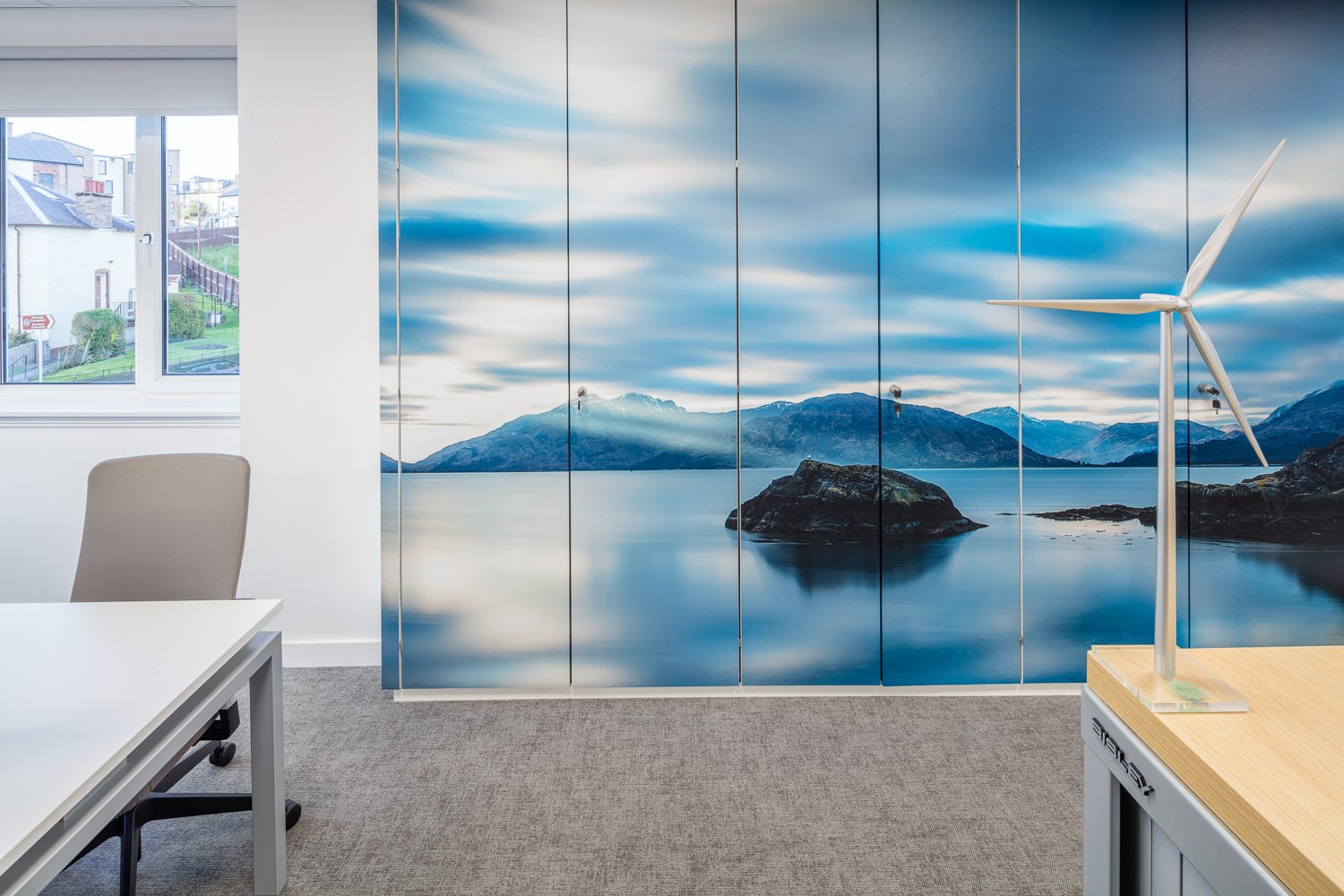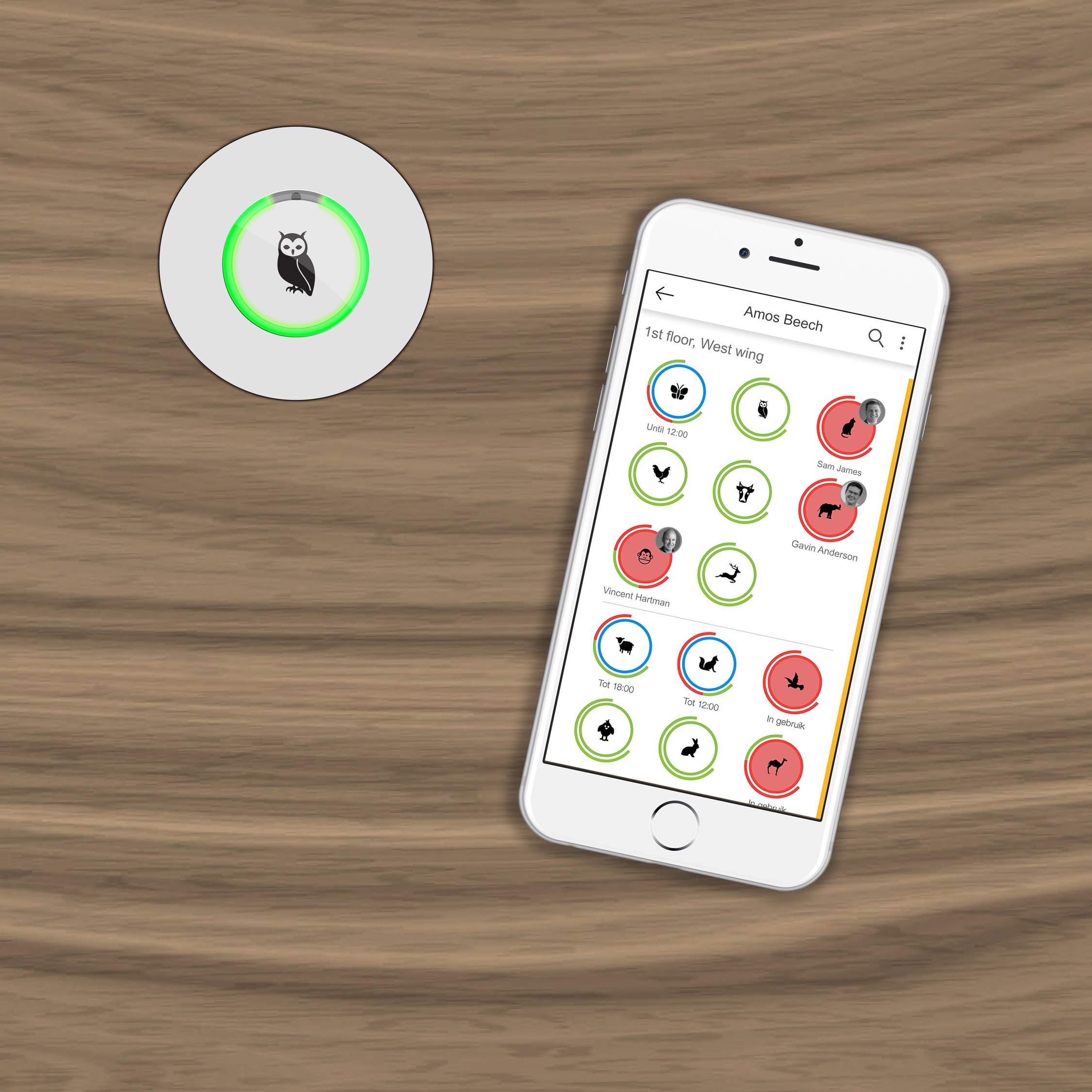How the acoustics of your office impact your team's productivity
The competition to recruit, train and retain talent has become fierce in the last few years. Businesses are constantly looking and trying new ways that will ensure that their employees have a healthy and positive work environment.
At the same time, they are also working to save on office space and cut on their expenditure. The real challenge is finding the balance between the two – don’t overspend, but keep your employees happy and productive.
This is where the open space comes into play.
One of the obvious advantages of having an open space is the ability to fit a large number of employees in a small space. (yes clearly written pre-covid, but we trust that you can read through that 🙂)
But do they work for your employees?
They are unique and make strong statements in terms of office culture. They also offer more benefits including the provision of natural light that keeps people active. Natural light makes workers patient, less frustrated, productive and healthier.
There is a need for open office layouts for employers who want to enhance employee creativity, boost collaboration and encourage innovation.
However, these spaces have a downside: the lack of sound privacy. These open space environments drain employees’ morale due to noise pollution, according to research.
Noise pollution is a huge contributor to poor productivity at work. It’s difficult to perform tasks that need high concentration in such spaces.
Employees are dissatisfied with the level of speech privacy and how it leads to work disruption.
A study by Udemy supports this with 80 percent of respondents claiming chatty coworkers are the biggest distraction, while office noise was cited by 70 percent of them.
Another reason for noise distraction is mobile technology. Employees now have access to a vast number of devices that distract them.
Office acoustics impact your team's productivity
People can put up with noise only for so long before it becomes annoying. Most employees work without realising that office noise is affecting their productivity. Some of the noise sources include:
Background noises from mechanical and technical issues in the office. These include noises from pumps, boilers, chillers, air handling units, circulation fans, ventilation rooms, etc. The same goes for noise from electronic equipment like vending machines, printers, keyboard strokes, and fax machines.
Fluctuating sounds from laughter, loud speech, and the phones ringing
Activity noises from loud footsteps, loud messaging and chat beeps, loud chewing noises and cursing/muttering from colleagues.
Transportation noises coming from road traffic, planes and trains. Some traffic noise is inevitable, and can be tolerated, but too much noise may cause concentration and productivity issues.
Use of speakerphones that lead workers to speak even more loudly
HVAC noises
High frequency sounds from keyboards as people type or other mechanical issues
Too quiet spaces can also be problematic for employees. Not all sound is noise. It becomes noise depending on the task at hand. Low background noises affect privacy.
Noise from leakages, for example through gaps and cracks in buildings. These could include keyholes or air vents, wall openings catering for pipes, ducts and wiring, joints between raised floors, ceilings, and partitions, etc.
Research shows that noise distraction leads to loss of productivity and the more intense a task is, the more noise disturbs those performing it.
Another study found that participants who worked in a loud noise environment were more tired, less motivated at work and remembered only a few words of what they were studying, compared to those working in a low noise environment.
A TED talk by Julian Treasure shows that noise pollution in open offices reduces employee productivity by 66 percent:
Poor acoustics lead to more noise, which causes stress on employees. Stressed employees are vulnerable to high blood pressure, headaches, digestive disorders, ulcers, and hypertension.
Noise will also affect motivation, in that one will not be willing to adjust their workstations, even though another setting would be more comfortable and reduce injury risks.
Indeed, controlling sound distraction in an otherwise busy work environment is a tough balancing act. But it can be done.
Your office interior design and its acoustics is a good place to start.
Think about your layout and how it will protect your employees from distractions related to office noise.
You can protect their physical and emotional wellbeing, too, by ensuring that every office component works to provide an ideal acoustic setting. Some of these components include:
Furniture
Space
Partition composition and height
Ceiling material and height
Wall materials, treatment, placement and shape
Flooring
Hanging materials
Screens
Furnishings
Lighting
Rooms depth, mechanical systems, and materials
Abstracta Airflake is fabric-covered moulded fibre felt that absorbs sound and prevents echoes. Designed by Stefan Borselius.
Designing an effective open office space leads to a robust business environment. You save money with space, while enabling easy communication and collaboration.
To achieve this, consider the design, installation and how to maintain each specified component to ensure an innovative open office system.
Seventy percent of employees said their productivity would increase if offices became less noisy in a study by the American Society of Interior Designers (ASID).
Their perceived effectiveness increased when noise from office equipment, background conversations, and mechanical systems was reduced.
Studies on speech privacy and conversational distractions have shown that making effective acoustic adjustments to open office environments, improves productivity and mental wellbeing.
It allows the employee to focus on tasks at hand – a 48 percent increase, decreases conversational distractions by 51 percent, leads to reduced errors on tasks by 10 percent and reduces stress (measured in terms of physical symptoms) by 27 percent.
Ready to make your office space a haven of productivity by taking control of its acoustics?
If so, great choice!
Acoustic control is an investment that pays for itself through better productivity of employees and lower churn rate.
Acoustic office design at Help Musicians at The Briggait in Glasgow
Office Acoustic Control – What You Need to Know
A Guide to Office Acoustics defines acoustics as the science of sound. Its history started with the Greeks who understood sound travel and used this information to build amphitheaters.
Sound is a series of pressure fluctuations or waves. They start when an object vibrates from its source, for example, a vocal cord. It moves in all directions in the air at the speed of sound which is around 786mph.
What sound encounters or its distance from the source determines what happens after. The arc of the imaginary sound line grows larger while energy dissipates.
If it encounters a hard surface, it's reflected, leading to a sound energy buildup that amplifies the sound. Some of this energy is absorbed if it hits a soft surface leading to a reduction in sound.
Acoustic engineers use this information to combat potential acoustic problems. They use the ABC method that controls certain factors to achieve the right acoustic environment. This method includes:
A - absorption of sound waves done by absorbing sound before reaching the listener's ears
B - blocking the right amount of sound
C - covering or masking the unwanted sound
From Offecct we have been given this 12 min training video from May 2020 about accoustics, which is quite helpful. The sound quality isn’t great but as it is in Swedish with English subtitels it doesn’t really matter:
To solve noise issues, the acoustic technician must know what kind of noise problem your office has. They must put into consideration what acoustic goals you have.
Are your employees suffering from concentration issues, lack of speech privacy or a combination of these?
Understanding the problem will help you undertake a gap analysis to establish the correct way to deal with noise issues.
Lack of speech privacy mostly happens in closed office spaces. It mainly occurs in sectors where consultations with clients should be confidential, like in the medical, financial or human resource sectors.
In this case, you have to provide sound absorptive surfaces and raise the background level to allow concentration.
Noise and concentration issues occur in open office spaces where buildings have hard reflective interiors. The sounds continually reverberate leading to increased noise levels as staff communicate with each other and attend to their usual tasks.
Employees can hear conversations held across the office space; they can hear keyboard strokes and phone conversations that lead to less concentration and, therefore, less productivity.
A combination of these two issues will occur where noise and lack of speech privacy affect the employees. They will have problems in all their working spaces including the boardroom, the client meeting areas and the open plan spaces.
In order to provide your employees with a space where they can work effectively, these agile environments require an acoustic landscape carefully designed to cater for all noise-related issues.
Measures will include having some level of noise absorption and privacy at the desks, controlling common area noises and having private spaces for confidential discussions.
Acoustics Solutions that Lead to Improved Team Productivity
Some of the areas to focus on include:
1. Furniture and Screens
Furniture can affect acoustic properties either positively or negatively. Hard surfaces reflect sound and things like glass-topped tables amplify sound. Soft surfaces absorb sound. You can use fabric covered soft panels or screens (free standing or placed between desks).
In open-plan spaces, furniture should prevent sound travel from one cubicle to the next. The divider panels should be at least 60 inches in height. Seventy-two inches is usually the best height, while 48 inches does not help block conversation noise.
Buy furniture with a sound blocking rating of about 18-20 Sound Transmission Class (STC). Consider the height, position, quantity, absorption properties, and background sound levels when installing screens.
Consider your furniture layout, too. Avoid furniture placement that has employees seeing each other. If they can see each other, they can hear each other. If you choose to use glass, then it’s acceptable, since glass is an excellent sound barrier.
2. Ceiling
Sound also travels up and bounces off the ceiling. The type of ceiling you choose can either insulate sound, absorb it or do both. Sound absorbing products differ depending on density, thickness, weight, and surface finish.
Their merits also vary in terms of whether they provide absorption or insulation.
Sound insulation depends on mass, density and the ability of the material to block sound passage from a room to another or block noise from outside. The types of ceilings you can choose from are: mineral fibre, plasterboards, metal, wood, stretch or exposed concrete.
When doing sound insulation, make sure you don’t compromise the ceiling performance when putting speakers, lighting fixtures, ventilation, ducting grilles, etc. In some cases, you may need to add ducting dampers, and acoustic hoods to maintain the quality of insulation.
3. Flooring
Carpets not only reduce footfalls, but they also absorb sound and block noise from the floor below. A well-cushioned carpet can provide acoustical insulation properties. Choose a thick permeable carpet for maximum sound absorption.
You can also use raised access flooring. These are individual panels continuously decked and supported on pedestals to attain a certain height. To achieve excellent sound absorption qualities, cover them with a carpet.
For insulation, compartmentalise the underfloor using either low-level plasterboard drywalls or high-density wool bats under the partitioning. You can also use acoustic pads.
During installation, be careful when introducing grilles, air ventilation, and open cable apertures.
4. Sound Masking
If you already designed your open office space, think of improving the work environment using sound masking.
Sound masking devices help by slightly raising the background sound level of a building. It makes it hard for employees to get distracted by conversations from coworkers.
5. Partitions
Partitions are great for insulation, but not so good in sound absorption. They are, however, used to support acoustic wall panels. Walls may not as good for sound absorption like ceilings since they have interruptions like windows, artwork, furniture, and doors.
However, where space is available, wall mounted sound absorbers will reduce reverberation time or complement ceiling absorption.
Acoustic wall paper covering
Some companies develop wall coverings with sound-absorbing properties used as part of a holistic approach. You can also use synthetic acoustic plasters through spraying or troweling for a smooth finish. Types of partitioning include plasterboards, modular/relocatable, glazed partitions, and operable/movable walls.
Make the partition airtight, since any hole, no matter how small, weakens wall performance.
6. Doors
Doors are tricky since they are a weak point in partitions. However, you can use this weakness as a privacy strategy by allowing background sound to leak to the room.
When the background noise is too low, problems with privacy arise. The best doors for acoustics are airtight doors.
Sliding doors have a space between the partition and the door that could affect performance. Use acoustic seals to enhance performance or increase door thickness.
7. Acoustic Lighting
Combine noise absorption with acoustic lighting without taking much space or interrupting it physically. Acoustic lighting hangs elegantly and improves flexibility, productivity, and overall happiness.
Good sound absorbing light will balance light and ambiance while offering comfort, tranquility, and space.
Board room acoustic lighting panels
8. Biophilia
There is an undeniable connection between humans and nature. We simply perform better and are happier when surrounded by nature.
Biophilic design makes it possible for you to leverage the benefits of this connection even in indoor office space. It integrates natural materials with modern architecture by providing visual privacy and reducing noise levels.
Green walls provide better acoustic absorption than conventional building materials. Plants diffuse and deflect sound, but only if you spread them evenly in the available space, use green modular walls tested for effective acoustic properties and use large plant containers that can accommodate more compost and top dressing.
9. Internal Finishes
Consider the orientation of absorption, the location, and whether the finish is reflective or deflective. They are great at promoting intelligibility and privacy.
For example, you can control the spread of noise by placing highly absorptive furniture near the source of the noise. Using absorptive materials can improve acoustics. Acoustic furnishings include absorptive rugs, soundproofing curtains, dividing screens, and absorption panels.
Conclusion
The acoustic performance of a room will also depend on factors like the size of the room, its shape, other elements in the room and their relationship.
For instance, when designing acoustics consider balancing it with the needs of other users in the building. Take a holistic designing approach that considers acoustic comfort, visual comfort, cost, sustainability, and thermal comfort.
When dealing with an open plan environment, consider the requirements that will improve productivity in various rooms.
Offices, conference rooms, and meeting rooms must have appropriate use of space so that people in a large room can hear the speaker while those in small rooms do not encounter echoes.
Avoid acoustic leakages so that employees can maintain confidentiality when needed. Background noise should not be at a minimum and fail to mask other office sounds. It should also not be too loud that it disrupts communication and concentration.
You can achieve increased productivity by considering the sound absorption rates your office needs, the reflective needs, fittings, furniture, and background sound level. These changes will enhance office space aesthetically and acoustically.
Do you want to read more about:
Moving or refurbishing?
Space planning and utilisation study?
Branding in office design?
Attracting and retaining talent?
Click here:




































